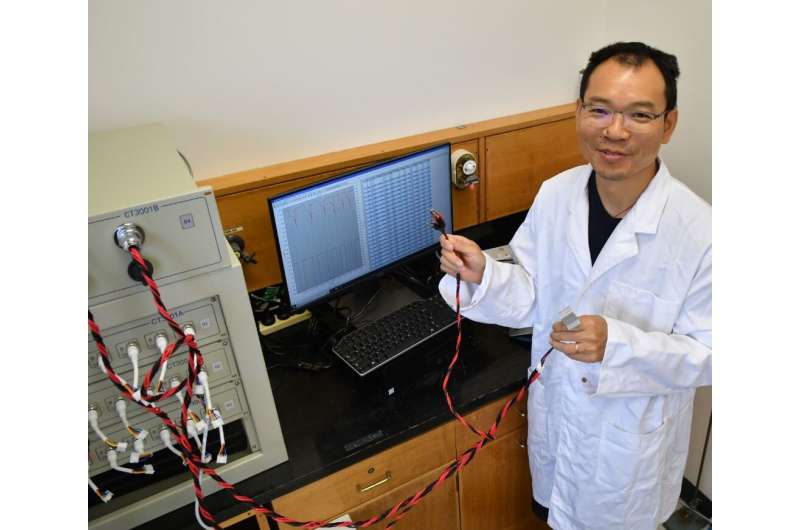Boost for better batteries in consumer electronics

An international research team has moved closer to developing a more sustainable, rechargeable "organic" battery model by doubling its energy storage capability.
With the aim to one day power small electronic devices and divert toxic waste from landfill, researchers at Flinders University with Chinese collaborators have used a catalysis strategy to produce two-electron storage in organic radical batteries, or "ORBs"—a big advance in improving their storage capability.
The emerging rechargeable battery technology uses more environmentally friendly materials than current metal-based batteries. ORBs can be made from sustainable organic compounds to reduce reliance on lithium and cobalt mining. These rare materials are usually not recycled in modern batteries and end up in rubbish.
However, the takeover of ORBs in electronics and other small device markets has so far been limited because of their lower capacity than commercialized lithium-ion batteries.
Previous research has found only one electron can be reversibly stored in the materials, which only provides the battery with a maximum capacity of 110 mAh/g.
"Catalysis has been widely used in lithium-based batteries such as lithium-oxygen batteries and lithium-sulfur batteries to improve their energy and power performance," says senior lecturer in chemistry Dr. Zhongfan Jia, a research leader at Flinders University's Institute for Nanoscale Science and Technology.
The research team firstly apply this strategy to ORBs and successfully achieve reversible two-electron storage in a polymer-based ORB.
Dr. Jia's research team has recently reported all-organic polymer battery with a cell voltage of 2.8 V, which is one of the highest voltages in organic batteries. Now, this work further doubles the energy storage capability.
"This battery can deliver a capacity of 175 mAh/g, which is comparable to the commercialized lithium-ion battery, making a step closer to the practical use of ORBs.
"Our next goal is to combine these advances to develop organic batteries that can be implemented in consumer electronics," Dr. Jia says.
The article, "Anthraquinone-Catalyzed TEMPO Reduction to Realize Two-Electron Energy Storage of Poly(TEMPO-methacrylate)' 2022 by Wenbiao Li, Shangxu Jiang, Yuan Xie, Xiaoqing Yan, Fugang Zhao, Xinchang Pang, Kai Zhang and Zhongfan Jia has been published in ACS Energy Letters.
Also see the previous article, An All-Organic battery with 2.8 V output voltage (2022) by Shangxu Jiang, Wenbiao Li, Yuan Xie, Xiaoqing Yan, Kai Zhang and Zhongfan Jia was published in Chemical Engineering Journal.
More information: Wenbiao Li et al, Anthraquinone-Catalyzed TEMPO Reduction to Realize Two-Electron Energy Storage of Poly(TEMPO-methacrylate), ACS Energy Letters (2022). DOI: 10.1021/acsenergylett.2c00063
Shangxu Jiang et al, An All-Organic battery with 2.8 V output voltage, Chemical Engineering Journal (2022). DOI: 10.1016/j.cej.2022.134651


















